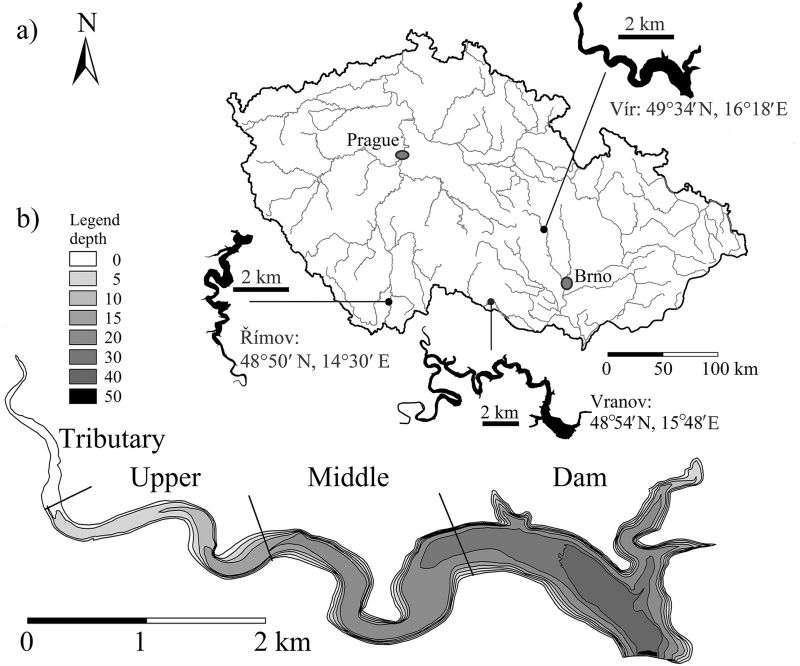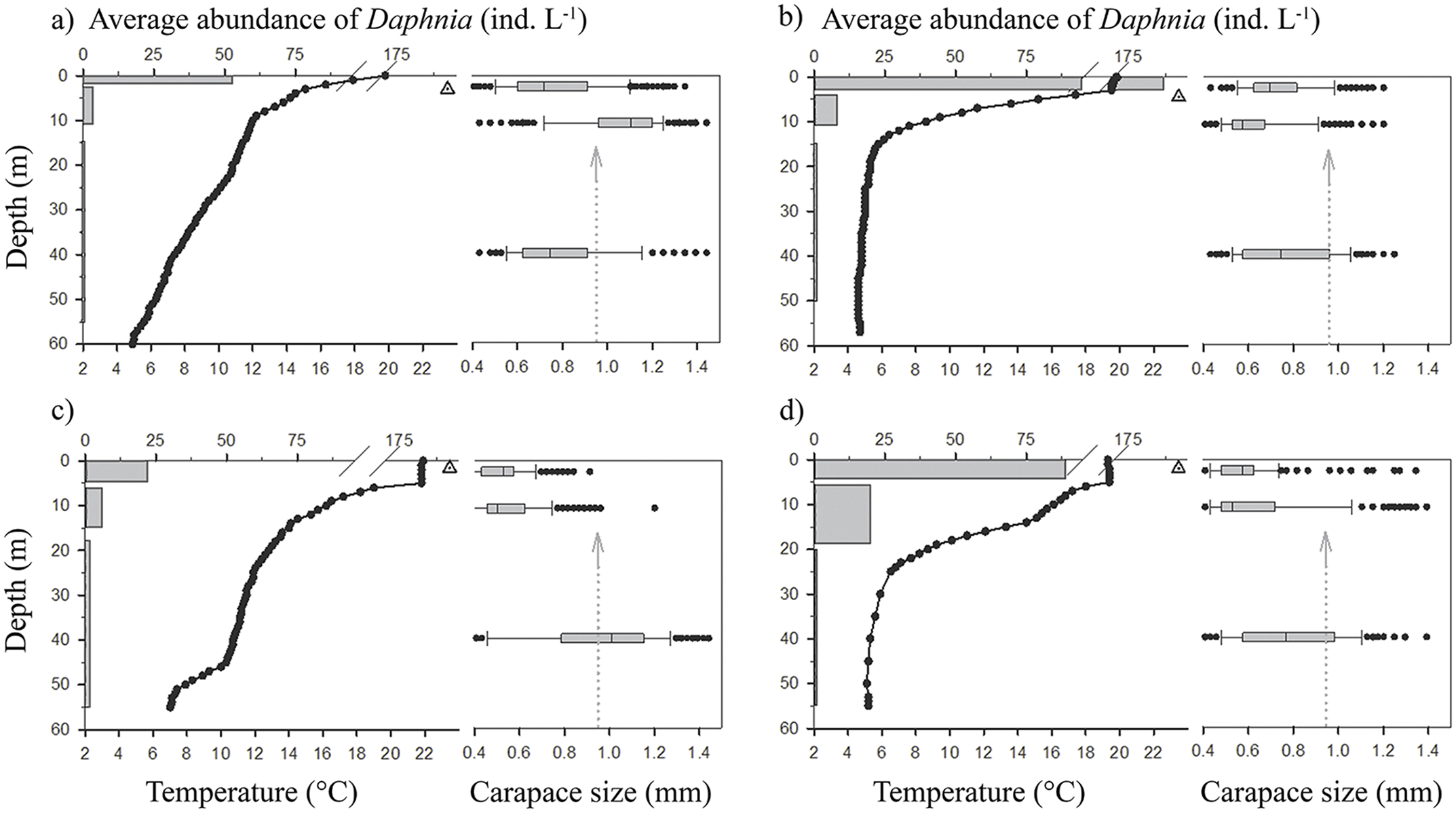Piscivory in cyprinids (Cyprinidae) is extremely rare. Specifically, common bream (Abramis brama) and common carp (Cyprinus carpio) are zooplanktivorous fish in deep lentic waters. Nevertheless, we observed predation by these two cyprinids under natural conditions in the Vír Reservoir, Czech Republic. We conducted diet analysis for cyprinids caught by trawling and gillnets and the large amount of young-of-the-year (YOY) perch (Perca fluviatilis), with sizes of 37–52 mm standard length, were found in their digestive tracts. In 2010, a large amount of YOY perch caused a significant decrease in Daphnia spp. size and abundance in the reservoir. Hence, a food deficit was induced for the cyprinids, apparent also from the poor nutritional condition of common bream which was much worse than the condition of those in similar reservoirs. Common carp and common bream shifted to forced piscivory, and they utilized the YOY perch as an alternative food source. In contrast, smaller species, such as roach (Rutilus rutilus) and bleak (Alburnus alburnus), widely utilized planktonic cyanobacteria. In the following year, YOY perch occurred in significantly lower numbers and conversely, Daphnia spp. size and abundance were significantly higher. The forced piscivory was not observed. Our results indicate a switch to forced piscivory by cyprinids, which was caused by a shortage of their natural food source. Moreover, this phenomenon presents an effective mechanism for reduction in the numbers of YOY perch, ensuring the stability of the ecosystem.
(Abramis brama) and common carp (Cyprinus carpio) are zooplanktivorous fish in deep lentic waters. Nevertheless, we observed predation by these two cyprinids under natural conditions in the Vír Reservoir, Czech Republic. We conducted diet analysis for cyprinids caught by trawling and gillnets and the large amount of young-of-the-year (YOY) perch (Perca fluviatilis), with sizes of 37–52 mm standard length, were found in their digestive tracts. In 2010, a large amount of YOY perch caused a significant decrease in Daphnia spp. size and abundance in the reservoir. Hence, a food deficit was induced for the cyprinids, apparent also from the poor nutritional condition of common bream which was much worse than the condition of those in similar reservoirs. Common carp and common bream shifted to forced piscivory, and they utilized the YOY perch as an alternative food source. In contrast, smaller species, such as roach (Rutilus rutilus) and bleak (Alburnus alburnus), widely utilized planktonic cyanobacteria. In the following year, YOY perch occurred in significantly lower numbers and conversely, Daphnia spp. size and abundance were significantly higher. The forced piscivory was not observed. Our results indicate a switch to forced piscivory by cyprinids, which was caused by a shortage of their natural food source. Moreover, this phenomenon presents an effective mechanism for reduction in the numbers of YOY perch, ensuring the stability of the ecosystem.
Keywords: Abramis brama; Alburnus alburnus; bleak; common bream; common carp; cyanobacteria; cyprinids; Cyprinus carpio; Daphnia spp.; Perca fluviatilis; perch; piscivory; roach; Rutilus rutilus; Vír Reservoir; young-of-the-year; YOY

